Dragon Saliva — Making the Sauce
One of the world's most spicy hot sauce. Writing about how my father and I created it and how we solved the many problems we faced. 2021-09-02
Some Backstory
About a year ago, my father was browsing the internet to try and find a specific type of hot sauce made from hot pepper extract.
When it comes to raw heat, Pepper Extracts are at the top of the fiery foods chain. Typically, pepper extracts start at over 1,000,000 Scoville Units and go as high as 16 Million Scoville Units, or "Pure Crystalized Capsaicin".
However, he didn't realize how ridiculously expensive these pepper extracts really were until he stumbled upon a 1oz 9 million Scoville hot sauce bottle, which can cost upwards of 100$.
The Scoville scale is a measurement of the pungency (spiciness or "heat") of chili peppers, as recorded in Scoville Heat Units (SHU), based on the concentration of capsaicinoids, among which capsaicin is the predominant component.
As soon as my father shared his observation with me, I immediately jumped onboard. We were going to make one of the world's most spicy hot sauce.
The Plan
Capsaicin, the molecule that makes chili peppers spicy, is situated at 16 million on the Scoville scale. However, since pure capsaicin is excessively expensive, the most efficient way to create very spicy hot sauce is to extract it directly from hot peppers.
The easiest way to do so is to soak chili peppers in a solvent such as acetone. However, as demonstrated in this video, the process can be incredibly wasteful and time consuming because of the low solubility of capsaicin.
Instead, my father and I opted for a vastly more efficient method: the use of a soxhlet extractor.
A Soxhlet extractor is a piece of laboratory apparatus [...]. Typically, Soxhlet extraction is used when the desired compound has a limited solubility in a solvent, and the impurity is insoluble in that solvent. It allows for unmonitored and unmanaged operation while efficiently recycling a small amount of solvent to dissolve a larger amount of material.
Below is a picture of one said extractor.
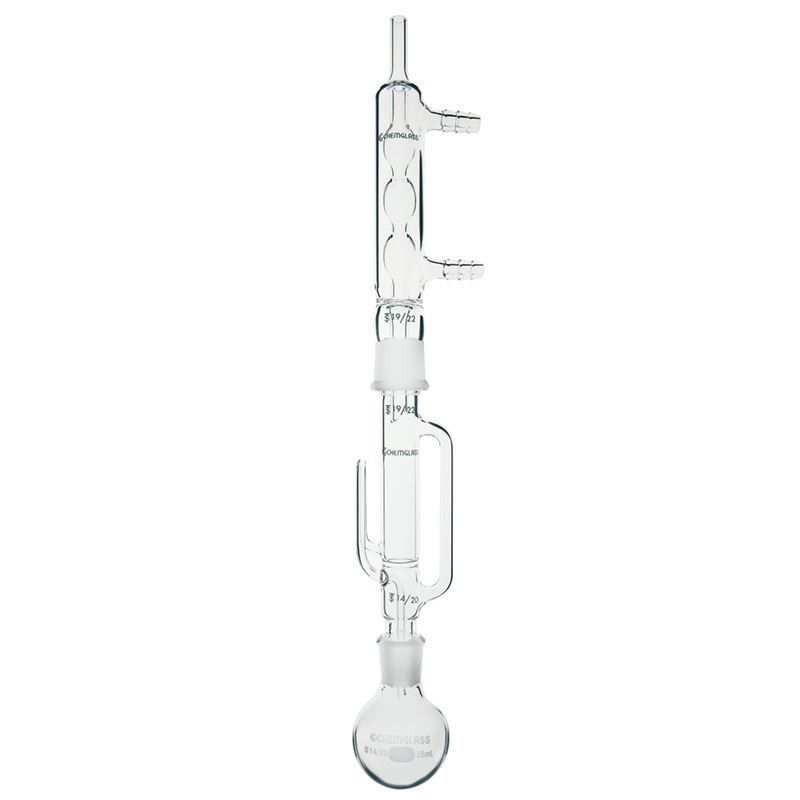
Extracting Spiciness
Once we received both the soxhlet extractor we had ordered along with a few pounds of cheap chili pepper powder, the extraction phase started. We closely followed the procedure Nile Red had documented in a YouTube video of his. Below are a few pictures I took during the extraction process followed by a video of the extractor running. I would love to explain in depth how a soxhlet extractor works, but it is beyond the scope of this post.
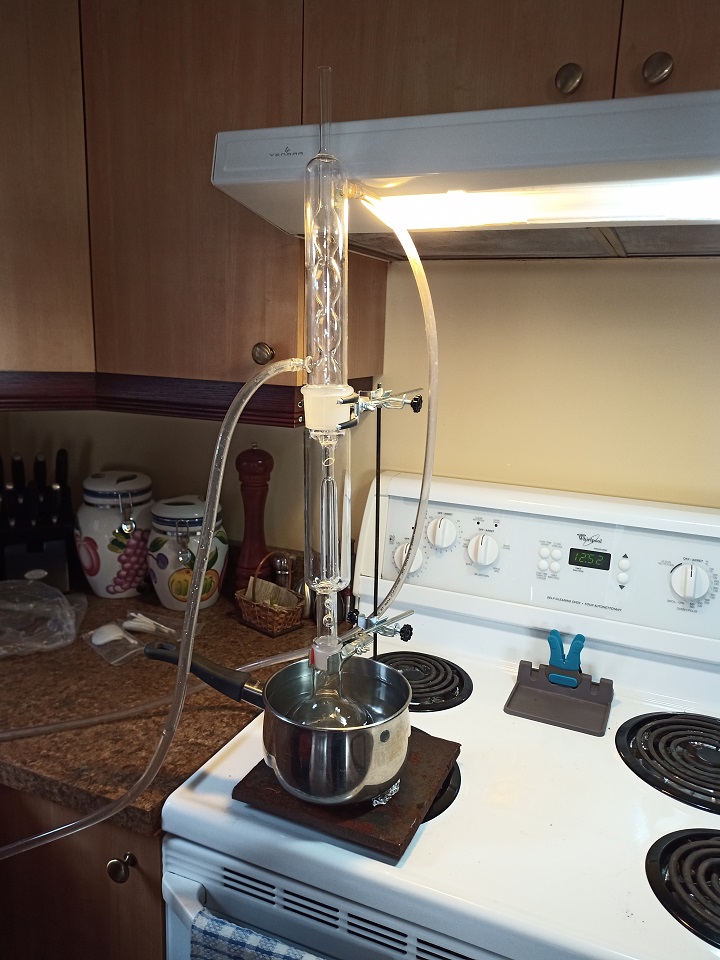 |
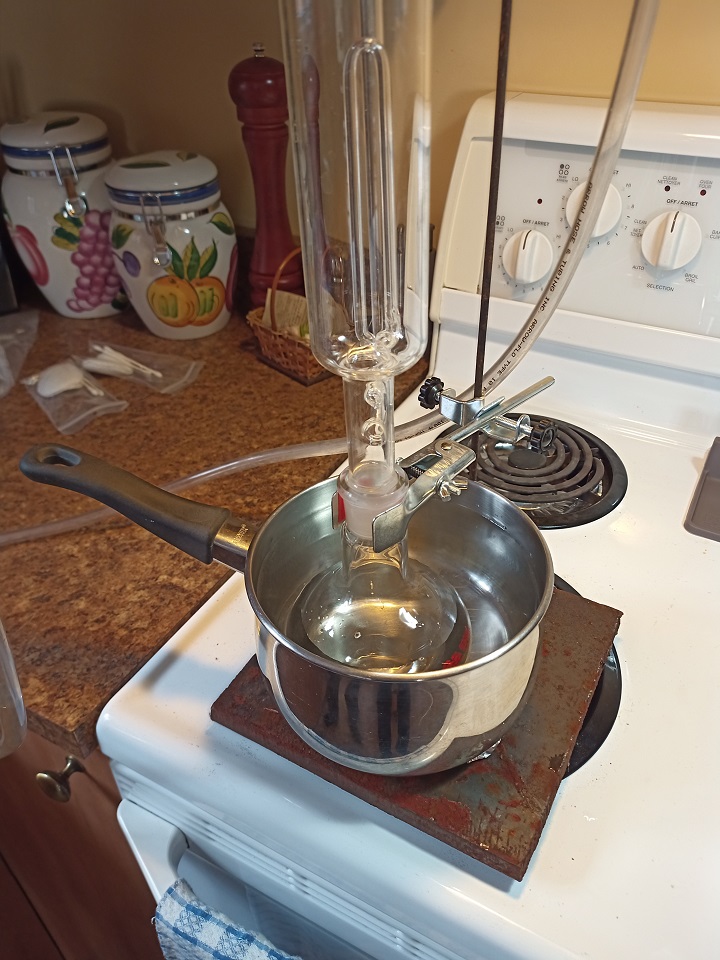 |
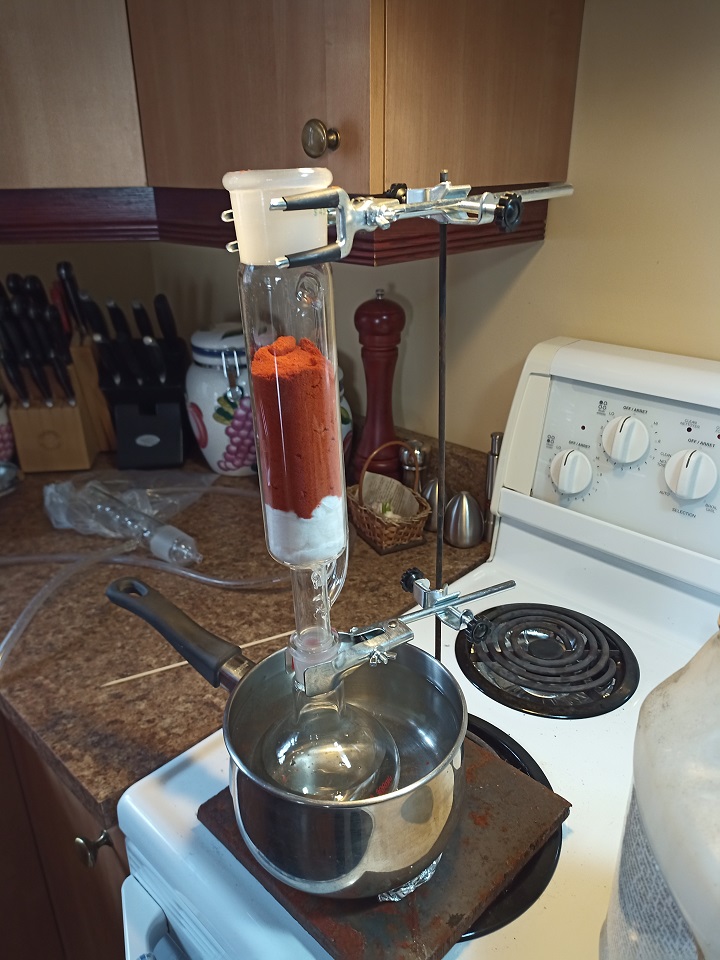 |
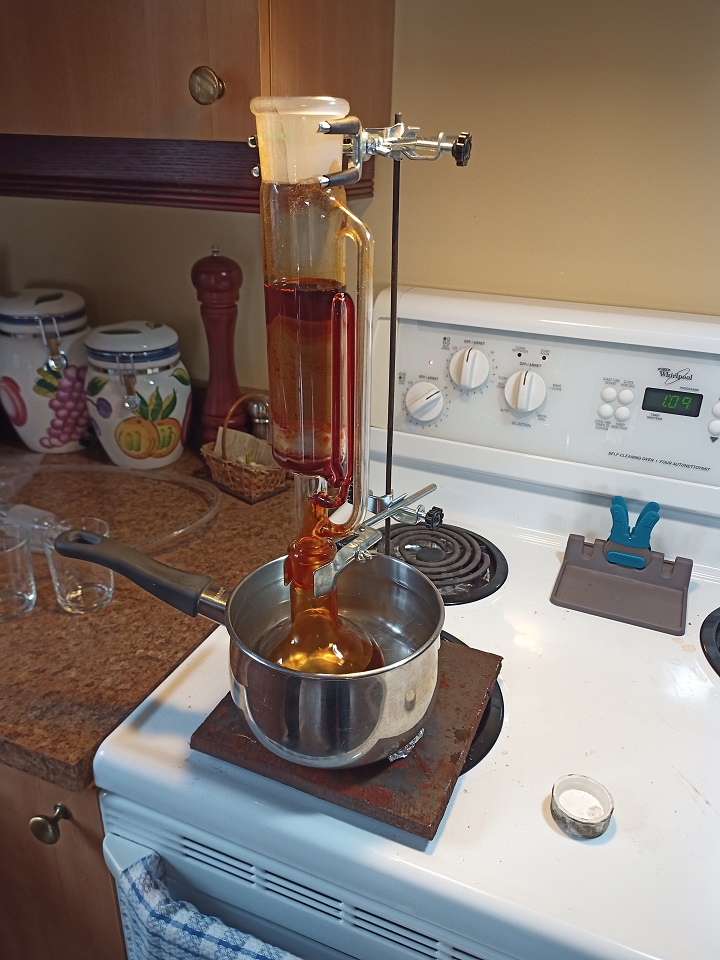 |
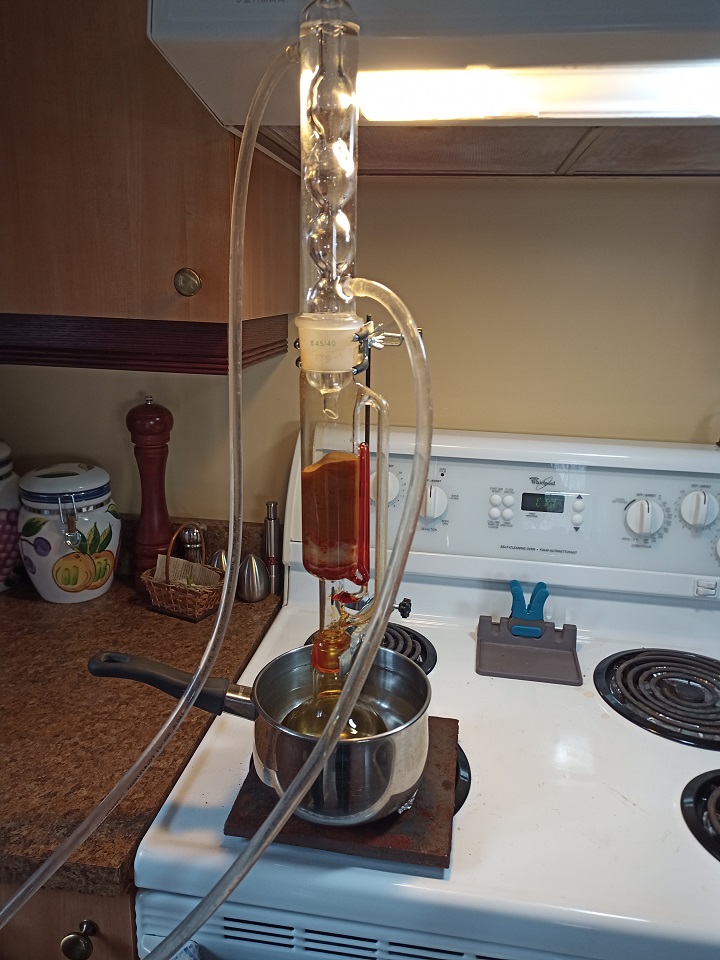 |
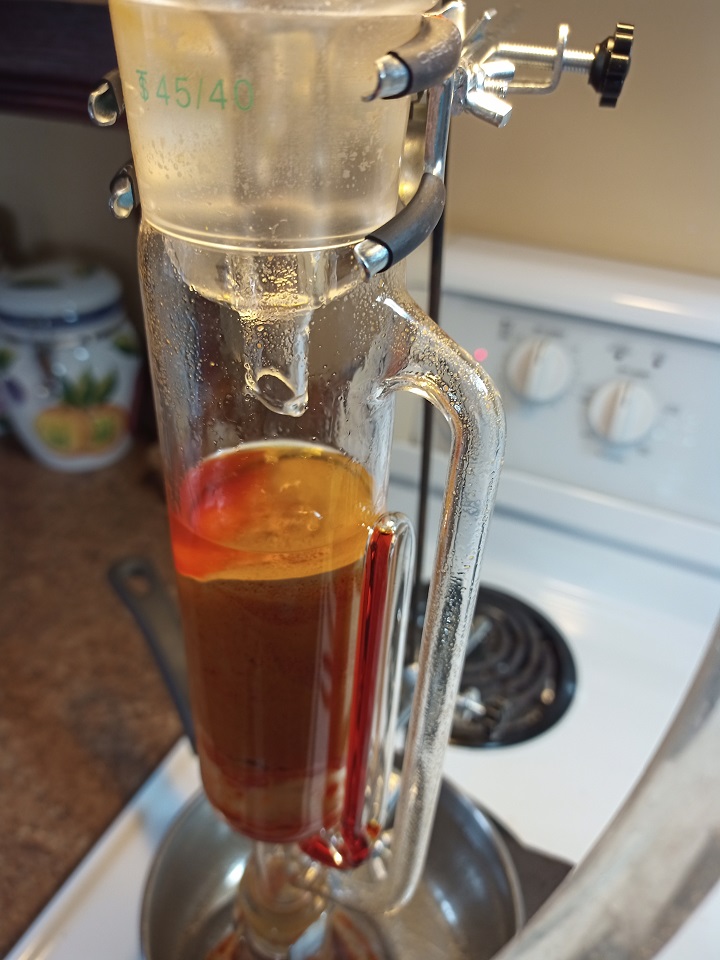 |
|---|---|---|---|---|---|
| video | 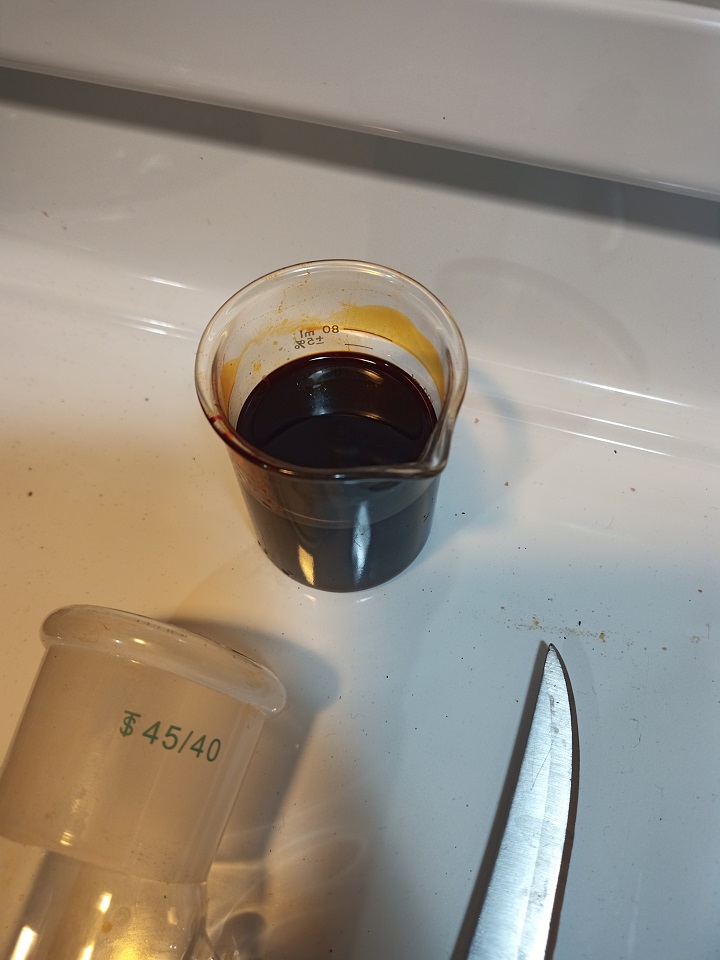 |
Once the chili powder had become colorless, we were left with a few milliliters of concentrated pepper extract dissolved in acetone, our solvent of choice. We left the solution in a well-ventilated area for about a week to let the acetone evaporate, after which we were faced with an unexpected complication: it was barely spicy.
Problem Solving Time!
In short, my father and I had just spent months working on this project for it to turn out to be a complete fail. However, as many of you probably already know by now, I would never give up that easily.
At the begining of the project, I was brainstorming ways to create an alien-like type of hot sauce. Instead of extracting capsaicin from chili peppers, I wanted to mix pure crystallized capsaicin in a viscous medium such as glycerol to obtain an opaque colorless heterogeneous mixture which I could then dye any color I wanted. However, there were a few problems with that approach:
- Pure crystallized capsaicin is way too expensive to be worth using
- Since the mixture obtained would be heterogeneous, the crystals would very likely precipitate out of it
- There is no real point in buying synthesized hot sauce, rendering the idea pointless
However, without realizing it at the time, I had found the solution to the problem my father and I were having. My thought process was the following:
Use the tasteless glycerol as a medium to hold pure capsaicin crystals, which would then make the mixture spicy
As it turns out, this is the perfect solution! We would use our barely spicy chili pepper extract as a medium to dissolve pure capsaicin into. This way, the final product would look and smell like normal hot sauce while being extremely spicy. Unfortunately, there was still a slight issue: pure capsaicin is way too expensive.
The Solution
After some research, my father stumbled upon a chemical called nonivamide.
Nonivamide, also called pelargonic acid vanillylamide or PAVA, is an organic compound and a capsaicinoid. [...] It is present in chili peppers, but is commonly manufactured synthetically. [...] It is used in the pharmaceutical industry in some formulations as a cheaper alternative to capsaicin.
Even though nonivamide is only at 9.2 million on the Scoville scale as opposed to 16 million in the case of capsaicin, it costs a fraction of the price. This way, we would still be able to create one of the world's most spicy sauce for very cheap.
After a dissolving a few grams of nonivamide in our chili pepper extract using the soxhlet extractor, we were left with a thick black goo that was impressively spicy. I ran some numbers and estimated that the sauce we had created was around 4.2 million on the Scoville scale, which was more than enough to call this project a success!